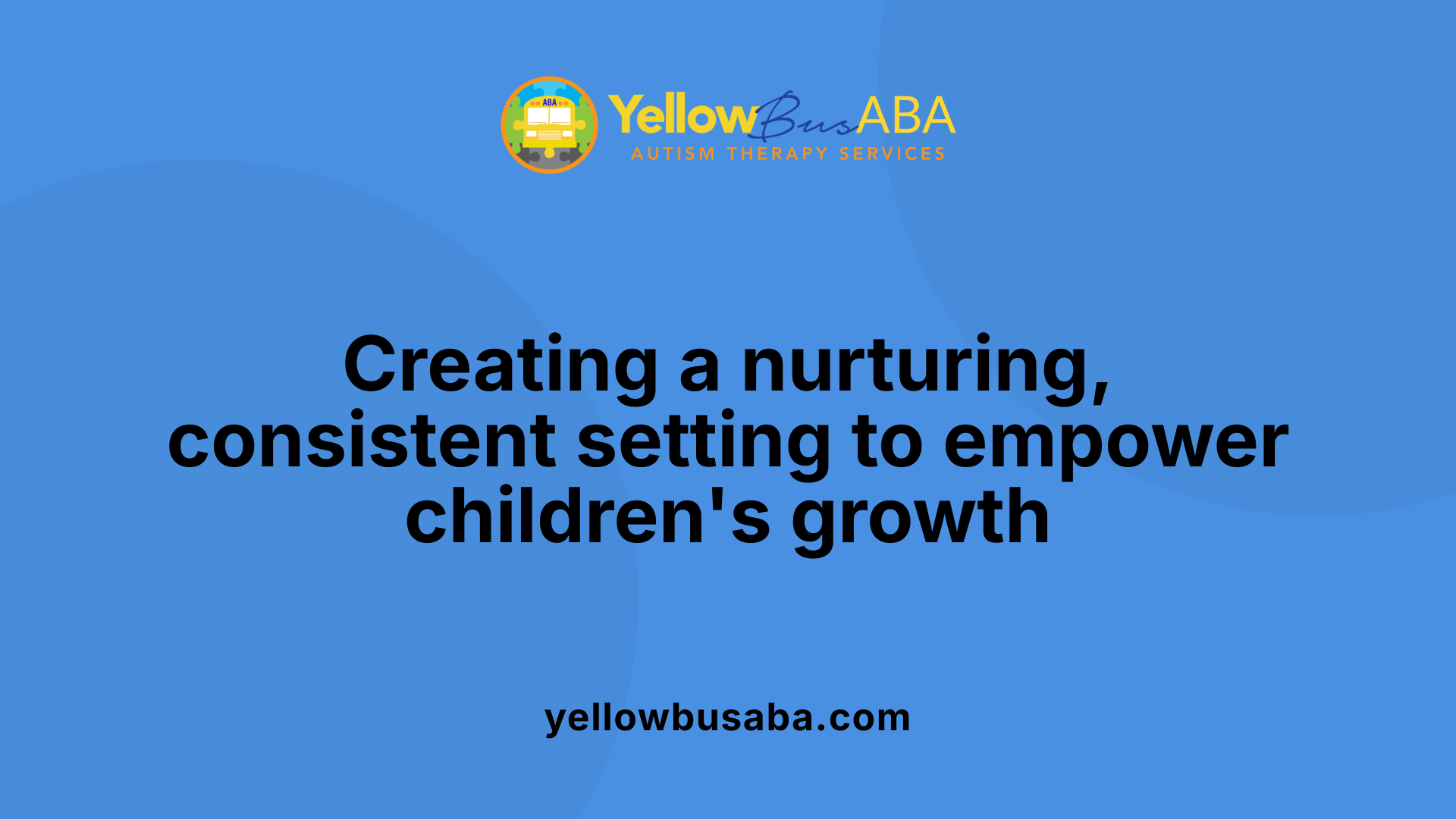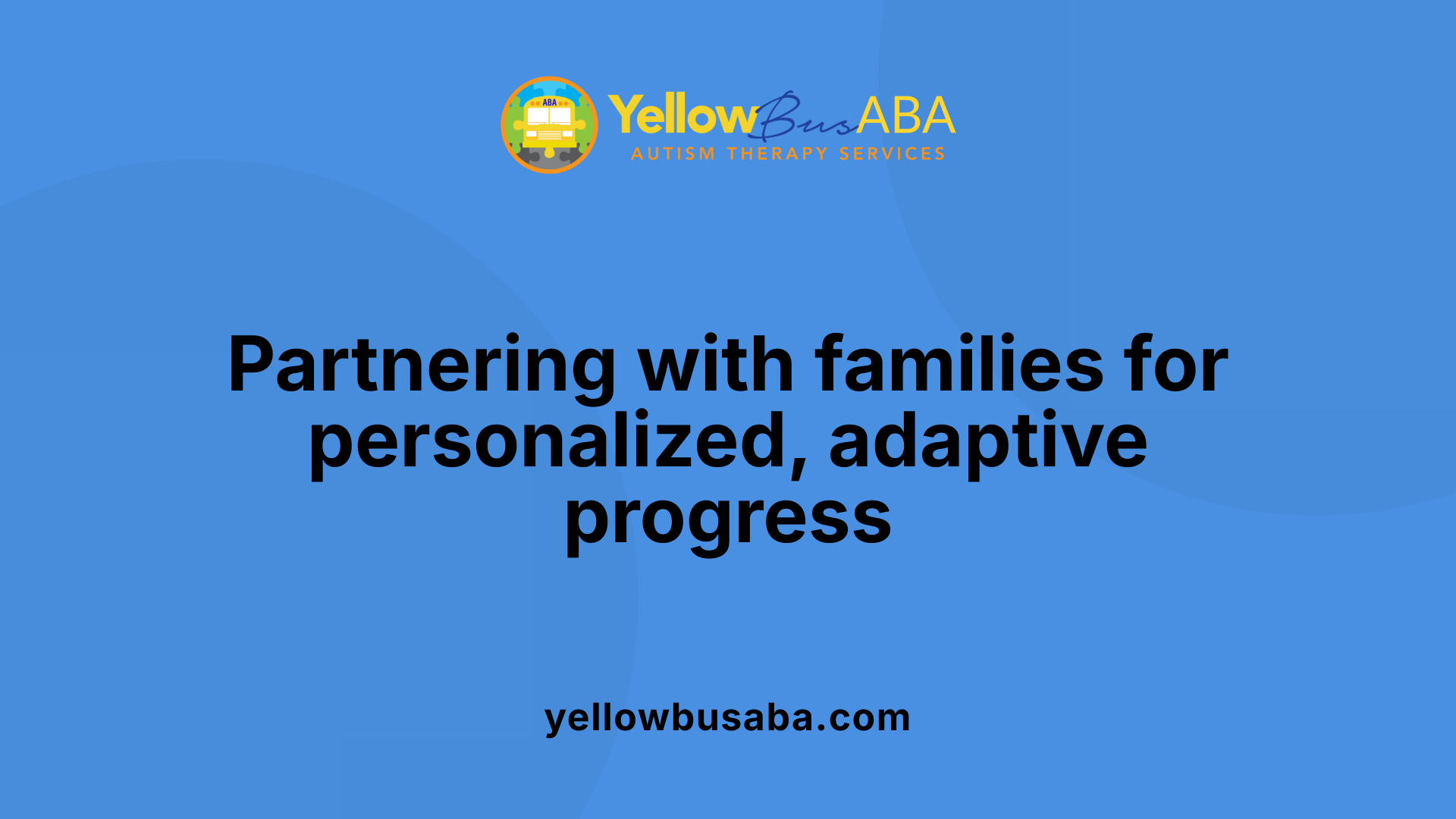Understanding the Value of Center-Based ABA Therapy for Children with Autism
Center-based Applied Behavior Analysis (ABA) therapy offers a structured, resource-rich environment tailored to meet the developmental needs of school-aged children with autism spectrum disorder (ASD). This article explores how this specialized setting enhances social skills, communication, and independence, providing children with crucial tools for success inside and outside the classroom.
Structured Environment Designed for Skill Development

How does ABA therapy work with school-aged children?
ABA therapy for school-aged children is tailored to address their unique developmental and educational needs. The therapy involves detailed assessments and personalized plans that focus on improving behaviors, communication skills, and social interactions. Therapists work closely with children within classroom-like settings, conducting functional behavior assessments (FBAs) to understand the reasons behind specific behaviors.
Based on these insights, individualized intervention plans are created, emphasizing techniques such as positive reinforcement and discrete trial training. Therapists provide consistent, one-on-one support and collaborate with teachers and families to ensure therapy goals are reinforced across different environments. Group activities and peer interactions further support social development, helping children learn social rules, cooperation, and communication skills crucial for school success. Through ongoing data collection, adjustments are made to improve outcomes and promote independence. Overall, ABA therapy in school settings aims to foster academic engagement, behavior regulation, and social skills, preparing children for lifelong learning and social integration.
Advantages of a Specialized, Multidisciplinary Setting

Why might center-based ABA therapy be suitable for school-aged children?
Center-based ABA therapy offers a highly organized and resource-rich environment, optimal for supporting school-aged children with autism spectrum disorder (ASD). These centers are equipped with visual aids, communication tools, and educational toys, which help children develop essential skills within a controlled setting. The structured environment reduces common distractions found at home, allowing for intense focus on learning and behavior goals.
One of the major benefits is the opportunity for socialization. Through group activities like circle time, arts and crafts, and movement breaks, children practice taking turns, waiting, and engaging with peers. These interactions are vital for developing social skills such as sharing, understanding emotions, and requesting items from others.
A multidisciplinary team of professionals—including Board Certified Behavior Analysts (BCBAs), Registered Behavior Technicians (RBTs), speech therapists, and occupational therapists—works together to deliver tailored interventions. This collaboration ensures that each child's program adapts to their evolving needs, using data-driven assessments to refine goals continually.
Furthermore, center settings foster the generalization of skills to other environments like school and community settings. The consistent schedules, supervised by trained staff, promote steady progress and help children become more independent in their daily routines.
Overall, center-based ABA combines the benefits of specialized resources, social opportunities, and professional oversight, making it an effective setting for supporting the developmental needs of school-aged children with ASD.
Promoting Social Skills Through Group Activities and Peer Interaction

What are the benefits and features of center-based ABA therapy for school-aged children?
Center-based ABA therapy creates a highly structured setting filled with specialized resources aimed at helping children develop crucial skills. Facilities are equipped with visual aids, communication devices, and educational toys that support learning in areas like language, social skills, and daily routines.
A multidisciplinary team of professionals, including Board Certified Behavior Analysts (BCBAs), Registered Behavior Technicians (RBTs), speech therapists, and occupational specialists, collaborate to develop personalized and adaptable treatment plans. These plans leverage evidence-based practices such as positive reinforcement and natural environment teaching to ensure effective intervention.
Children in these centers benefit from consistent routines and high-frequency skill repetition, which enhances learning and skill retention. The environment encourages social interaction through group activities, like arts and crafts, circle time, sensory play, and movement breaks. These activities promote engaging with peers, taking turns, participating in conversations, and working cooperatively — all vital for success in school.
Moreover, such group experiences build emotional regulation and social understanding. As children learn to manage their behaviors and respond appropriately in social settings, they are better prepared for real-world interactions outside the therapy center, enabling a smoother transition into classroom environments and community life.
Overall, center-based ABA therapy offers a comprehensive approach by combining structured learning environments, professional supervision, and opportunities for social engagement, supporting holistic development in school-aged children.
Enhancing Play and Communication Skills

How does ABA therapy work with school-aged children?
ABA therapy for school-aged children is tailored to meet their unique developmental needs. It involves personalized, data-driven strategies designed to enhance behavior, communication, and social skills.
Therapists often work directly within classroom settings or structured environments, conducting Functional Behavior Assessments (FBAs) to understand why certain behaviors occur. Based on these assessments, they develop specific behavior intervention plans aimed at promoting positive behaviors and reducing problematic ones.
In practice, ABA uses varied techniques such as positive reinforcement—rewarding desirable behaviors to encourage repetition—and discrete trial training, where children learn skills through repeated practice with clear prompts and consequences.
Natural environment teaching helps children apply skills in real-life situations, fostering independence and practical communication. Peer-mediated interventions enable children to learn social skills alongside classmates, promoting peer interaction.
Collaboration is vital; therapists work closely with teachers and families, providing training on ABA methods. This teamwork ensures consistency across different settings, supporting children’s progress.
Overall, school-aged ABA supports children in becoming more independent, engaged learners, and socially connected, easing their transition into more integrated educational and social environments.
Real-World Skill Generalization and Routine Building
How does center-based ABA therapy support children with autism compared to other settings?
Center-based ABA therapy offers a structured, consistent environment that is specifically designed to meet the developmental needs of children with autism. This setting provides access to a team of highly trained professionals, including Board Certified Behavior Analysts (BCBAs), Registered Behavior Technicians (RBTs), speech therapists, and occupational specialists. Such multidisciplinary collaboration ensures personalized and cohesive treatment plans, which can lead to more rapid progress.
One of the significant advantages of center-based therapy is the opportunity for children to engage in social interactions with peers within a safe, supervised space. This promotes the development of essential social, communication, and peer relationship skills.
The environment minimizes distractions and is equipped with specialized resources, like visual aids and communication tools, to support effective learning. Therapy rooms are often designed to mimic classroom and community settings, allowing children to practice skills in environments that closely resemble real-world situations.
Furthermore, centers utilize structured schedules and routines that help children become accustomed to consistent daily patterns. Activities include indoor and outdoor experiences, such as recess, arts and crafts, and sensory play, which encourage participation, turn-taking, and following directions. These routines are crucial for mastering self-care, safety, and social behaviors that are essential for successful school and community integration.
Overall, center-based ABA therapy supports children in applying their learned skills to natural settings, enhancing their independence and preparing them for ongoing success beyond the clinical environment. This approach ensures a smooth transition into mainstream educational settings where social and behavioral skills are vital.
Continuous Monitoring and Family Involvement

How does ABA therapy work with school-aged children?
ABA therapy for school-aged children is highly personalized and relies on ongoing data collection and progress monitoring. Therapists use detailed assessments to set clear, measurable goals tailored to each child's needs.
In classroom or center environments, ABA providers develop specific interventions focused on improving communication, social skills, and self-care routines. These interventions are adjusted based on continuous data analysis, ensuring that children receive the most effective supports.
Therapists often work directly within school settings or alongside educational staff to embed strategies that promote learning and behavioral improvements. This collaborative approach helps children generalize skills learned in therapy to their daily school life.
A combination of methods such as positive reinforcement, structured discrete trial training, and natural environment teaching are used to encourage skill development while reducing challenging behaviors. Peer interaction is also integrated to enhance social understanding and cooperation.
Overall, ABA programs aim to support children in becoming more independent and engaged learners, with a focus on preparing them for success both at school and in broader community environments.
What role do families play in center-based ABA?
Family involvement in center-based ABA therapy is essential for success. Parents and caregivers are actively engaged through training programs that teach them how to implement ABA techniques at home and support skill generalization.
Centers frequently offer workshops, regular meetings, and coaching sessions to help families understand therapy goals, data collection methods, and positive reinforcement strategies. This collaboration ensures consistency between home and therapy settings.
Supporting the child's progress through home-based activities and reinforcement builds confidence and promotes ongoing development outside of therapy hours. Families are encouraged to participate in social skills practice and behavior management routines.
In addition, centers often provide resources and ongoing supervision to reinforce learning, creating a comprehensive support system that aligns therapy goals with daily life.
By maintaining active family involvement, children benefit from cohesive treatment approaches, increased motivation, and improved overall outcomes. Consistent communication and shared understanding foster a team effort aimed at maximizing each child’s potential.
The Role of Family Support and Training
Why is family education about ABA techniques important?
Educating families about ABA methods helps ensure consistency in implementing strategies across different environments. When parents and caregivers understand how reinforcement, prompting, and behavioral inferences work, they can more effectively support their child's progress. This understanding empowers families to reinforce learned skills at home, making therapy more effective and helping children generalize behaviors beyond the therapy setting.
What strategies can promote consistency at home?
Consistency between therapy sessions and home routines is crucial for success. Families are encouraged to establish regular schedules for practicing skills, use the same cues and reinforcements, and follow the personalized behavior plans designed by ABA professionals. Visual supports such as charts or social stories can also help children understand expectations and routines, promoting smoother transitions and reducing challenging behaviors.
How can parents support the generalization of skills?
Supporting generalization involves integrating skills into various settings and activities. Families can create opportunities for children to use new communication or social skills during everyday activities like grocery shopping or family outings. Encouraging peer interactions and participating in group social skills activities provided at centers can enhance this process. Ongoing collaboration with ABA professionals ensures that strategies are adapted to different environments, helping children apply skills broadly and confidently.
| Aspect | Description | Support Strategies |
|---|---|---|
| Family training | Educating caregivers about ABA techniques | Workshops, home visit coaching, informational resources |
| Consistency at home | Maintaining uniform routines and reinforcement | Visual schedules, social stories, routine charts |
| Skill generalization | Applying skills in diverse settings | Community outings, peer group activities, natural environment training |
These approaches reinforce the importance of family involvement in achieving meaningful, lasting improvements in children with autism.
Empowering Children Through Comprehensive, Center-Based Support
Center-based ABA therapy offers a comprehensive, engaging, and highly structured approach that significantly benefits school-aged children with autism. By providing access to specialized resources, consistent routines, skilled multidisciplinary teams, and social interaction opportunities, these centers foster meaningful developmental progress. The tailored nature of these programs not only enhances communication and social skills but also prepares children for successful participation in school and community life. Family involvement and ongoing assessment further optimize outcomes, making center-based ABA a pivotal element in supporting children’s growth and independence.
References
- What are the benefits of center-based ABA services
- Exploring Center-Based ABA Therapy for Your Child With Autism
- ABA Therapy Centers for Children with Autism Prove to Be a Big ...
- ABA Therapy In-Home vs At a Center: 5 Key Differences
- Applied Behavior Analysis (ABA) | Autism Speaks
- Center-Based ABA Therapy Advantages for Autism Care
- Center-Based ABA Benefits | Ally Behavior Centers






